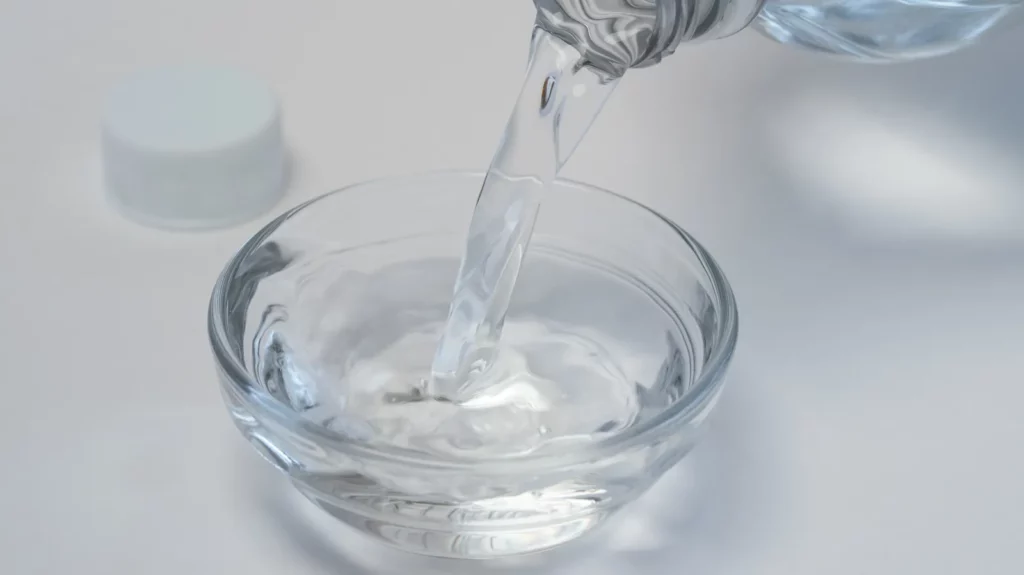The Difference Between White and Distilled Vinegar
The difference between white and distilled vinegar may not be visible but is there. Vinegar is an acidic liquid of acetic acid and trace chemicals produced through fermentation. Vinegar typically contains 5–20% acetic acid by volume. As you read on, you will know more.

Difference Between White and Distilled Vinegar
Vinegar is probably the earliest thing being used for several purposes. Vinegar is typically obtained from fruits like apples, grapes, and cider. The liquid is being used overages for cooking, baking, and food preparation.
The different types of vinegar include rice vinegar, malt vinegar, cane vinegar, beer vinegar, coconut vinegar, raisin vinegar, white vinegar, distilled vinegar, etc.
The different types of vinegar and the types are solely dependent on the source materials. Each kind of vinegar has its unique flavor profile and is regularly a novel reason outside of the kitchen.
Usually, acetic acid is produced by the fermentation of ethanol or sugars by acetic acid bacteria.
White Vinegar
Unlike the idea proposed by its name, white Vinegar is clear. It is usually produced from sugar cane, the extract of which is put through acid fermentation. In the process, the liquid is oxidized, causing the chemicals in it to change and become more acidic.
White vinegar is alternatively made by the combination of acetic acid with water. This process produces sourer vinegar than when it’s naturally fermented; it has 5% to 20% acetic acid content and is considered stronger than any of the other types.
White vinegar is mostly known for its excellent cleaning properties. For instance, when baking soda is introduced to white vinegar, it produces a foaming solution that is useful for removing grease and baked-on food off pans.
Distilled Vinegar
Distilled Vinegar is made from practically any type of vinegar. It is also referred to as Virgin vinegar. Distilled vinegar could be made from rice, malt, honey, wine, fruit, balsamic, date, kiwifruit, rice, coconut, palm, cane, kombucha, and much more.
‘Distilled’ plainly means that the liquid component is separated from the base mixture. This produces a colorless solution with 5-8% acetic acid in the water – relatively weaker than white or spirit vinegar.
Distilled vinegar, being the milder variation, is more suitable for cooking, flavoring, food additives, and food preservation. Additionally, it can be used as a household remedy.
White Vinegar and Distilled Vinegar
The difference between vinegar and distilled vinegar is that vinegar is a liquid with a sour taste that contains about five to twenty percent acetic acid and is obtained by fermenting dilute alcoholic liquids.
Then again, refined vinegar is a neutral spirit that undergoes fermentation and contains five to eight percent of acetic acid.
Notable Distinctions Between White and Distilled Vinegar
1. White is made by natural fermentation of sugar cane extractor by combining acetic acid with water. Distilled can be made from any time of vinegar, wherein more ethanol is separated from the base mixture.
2. White vinegar contains about 5 – 20% of acetic acid whereas distilled vinegar includes 5 – 8% of acetic acid.
3. White vinegar has a pH value of 2.4 whereas distilled vinegar has a pH value of 2.6.
4. White vinegar is sourer than distilled vinegar due to its higher concentration of acetic acid.
5. White vinegar is used for food preparation purposes while distilled vinegar is used for several other cleaning, polishing, and disinfection of bacteria.
6. White vinegar is obtained from fruits mostly. Distilled vinegar is obtained from the maze, malt, corn, barley, etc.
7. White vinegar is mostly known for its excellent cleaning properties. The Cleaning properties of distilled vinegar are dependent on the source material.
8. Distilled is usually helpful in relieving sunburn and prevents the skin from peeling or blistering. White vinegar is a bit too strong for that.
9. White vinegar is obtained by fermentation of the alcohol. Distilled vinegar is obtained by fermentation of the distilled alcohol or neutral spirit.
10. Examples of White vinegar include apple cider vinegar, grape vinegar, etc. Examples of White vinegar include malt vinegar, cane vinegar, etc.
If you find this article interesting, please subscribe with your email address for more educative materials.
CSN Team
